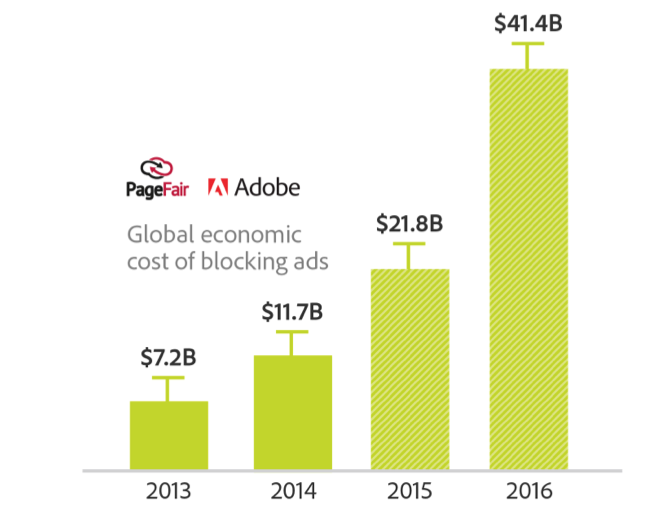How Ad Blockers Will Impact Your Web Design
If you use ad-blocking software, you’re part of a rapidly growing group: According to a new study by Adobe and PageFair, the amount of global revenue lost to online ad-blockers increased 41 percent over the past year. With 190 million active ad-block users around the world, and more every day, it’s clear that online ads face a challenge. Even Google recently declared that interstitial advertisements are pointless, and that chucking them in favor of a more seamless user experience will result in more website traffic. Combine that with the rise of mobile devices, which further limit the amount of Web real-estate that can be devoted to ad units, and things become even more challenging. So what’s a Web publisher or developer to do? If the website in question isn’t expected to draw revenue on its own—in other words, it’s an e-commerce site, or simply an information page—then ad-blocking isn’t a phenomenon you probably need to strategize against; if you choose to run ads anyway, you may see decreasing revenue in coming years as ad-blockers become more ubiquitous, and more people gravitate toward the mobile version of your site. For those building websites dependent on eyeballs and clicks, there’s always the option of sponsored stories and posts, with such content posted alongside “regular” content. Various websites have tried some variation of sponsored postings over the past few years, with varying degrees of success; for example, The New York Times has seen some encouraging results. Other websites, in lieu of ads, have begun experimenting with premium content—e-books and subscription-only articles being the choice of many. The potential audience for every website behaves differently, however; a pay-wall might work for a city newspaper or a popular blog, but it will strangle niche publications. Many websites experiment with models before plunging in, because embracing one of those models without pre-analytics can sometimes lead to wholesale rejection by the audience, and disaster. In any case, anyone building a website dependent on ad revenue will have to seriously consider that said revenue will trickle away in coming years—and adjust accordingly.

